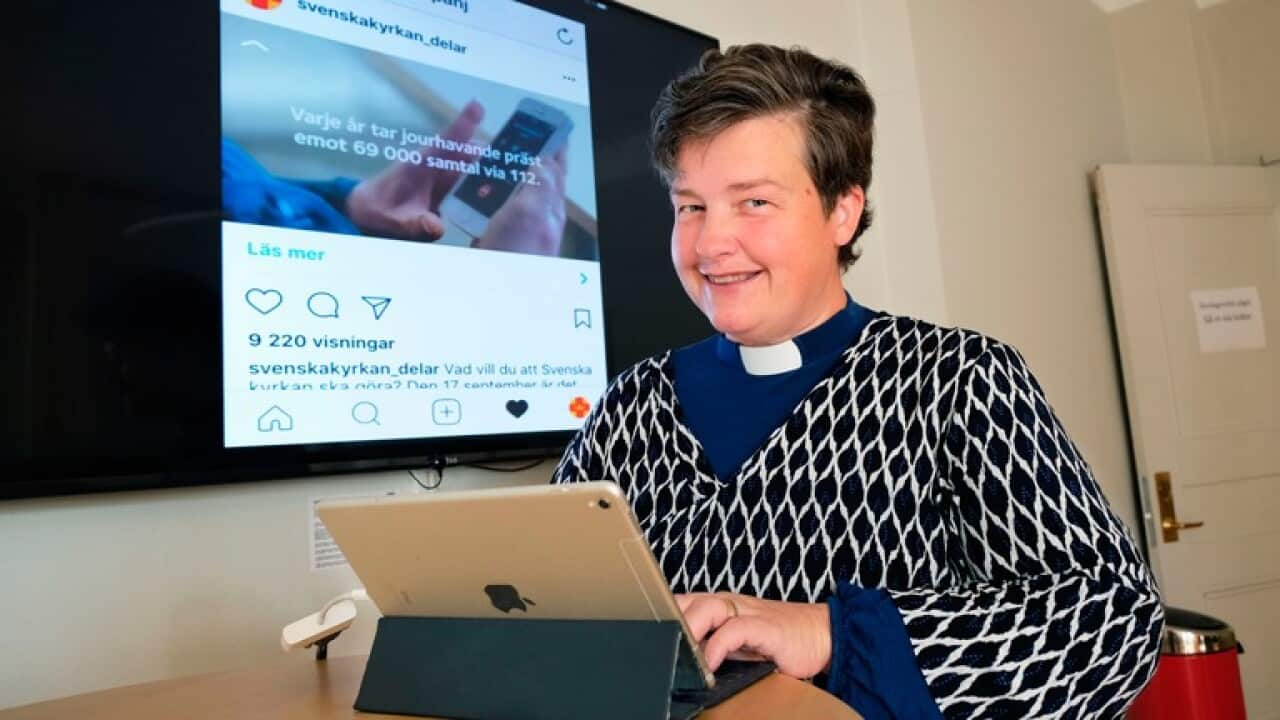Charlotte Frycklund was a young teenager when she realised she wanted to be the voice of her church. But she was attending a confirmation camp that didn’t believe women should be priests.
“So I put that dream away for a few years,” she said.
Despite the Church of Sweden allowing women priests since 1958, with the first three ordained three women in 1960, attitudes toward gender and church leaders have not always been uniform.
Charlotte could not ignore what she felt was a “calling” and became a priest in 1997, when she was around 28-years-old.
“There were a few people who thought this was a bad thing, that women should just be deacons, but not priests.”
At the time, Charlotte said around 25 per cent of priests in the church were female. She was even the first women priest in the town where she was first posted.
As Charlotte’s career progressed and she moved around Sweden, women priests became more common and so did accepting attitudes toward them.
“People are very accepting now, I don’t meet many people who don’t think I should be a priest, but some do,” she said.
“There have become more and more of us, so you can’t really live a life in the church without encountering us. So you at least have to stand us.”
Results from an employment survey by the Church of Sweden showed that women priests just outnumber men. There are six more women priests than men in the church, at 51.1 per cent.
And this parity has happened faster than expected: a report by the Church in 1990 had estimated that women would not make up half the total clergy until 2090.
For Charlotte, she is not surprised there is a balance of women and men priests in her church, as she has seen a cultural change throughout her career.
The Church of Sweden is the largest and oldest church in the country. It is the largest Lutheran denomination in Europe, and the third-largest in the world. It was a state church, forming after splitting from Catholicism in the 1500s.
The church is known for being progressive and has a history of being outspoken on gender. In 2017, the church urged its clergy to use refraining from using terms such as “Lord” and “he” in favour of the less specific “God.”
Charlotte even says she has always believed being a pastor was a “very female” occupation.
“It’s very caring, very verbal and we don’t get a lot of money. So it’s a typical female vocation,” Charlotte laughs.
“This is one of the reasons women feel free to accept this call from God.”
Despite women slightly outnumbering men in the position, a gender pay gap exists in the church: women pastors are still paid less than men. The wage gap averages 2,200 Swedish kronor ($350) per month, according to the church’s newspaper, Kyrkans Tidning. This has been attributed to men holding more senior positions in the church. Many Christian denominations and other religions do not allow women to be preachers, including Orthodox Judaism, Islam and Latter-Day Saints (Mormon). The Catholic Church, in 2008,that attempted ordination of a woman would result in automatic ex-communication for the women and bishops attempting to ordain them.
Many Christian denominations and other religions do not allow women to be preachers, including Orthodox Judaism, Islam and Latter-Day Saints (Mormon). The Catholic Church, in 2008,that attempted ordination of a woman would result in automatic ex-communication for the women and bishops attempting to ordain them.

Charlotte Frycklund is a woman priest in the Church of Sweden. Source: Supplied
Charlotte’s advice for others who are becoming a “first” in their field is that role models help.
“When I studied to be a minister I had a lot of ideas of what to do during sermons, and things like that, that were largely built around what men did, how men walked, how they talked,” she said.
“When I was ordained, I met a lot of female priests and that helped me become more of myself.”
Sweden’s first ‘social media priest’
Charlotte is embarking as a pioneer on another journey, as the church’s first social media priest. She logs onto Facebook, Twitter and Instagram and talks to people who message through those platforms.
“It’s easy to ask difficult questions of somebody who is behind a screen. It is also easier to ask questions to a priest that you don’t know,” she said.
Messages are often about difficult topics, including death, illness and even how could God let the coronavirus happen.
“I usually say I’m the stranger on the train that you can tell your stories to, and they leave and go on with their lives and I sit there and wait for the next person to come."


